SUMMARY
This is AI generated summarization, which may have errors. For context, always refer to the full article.
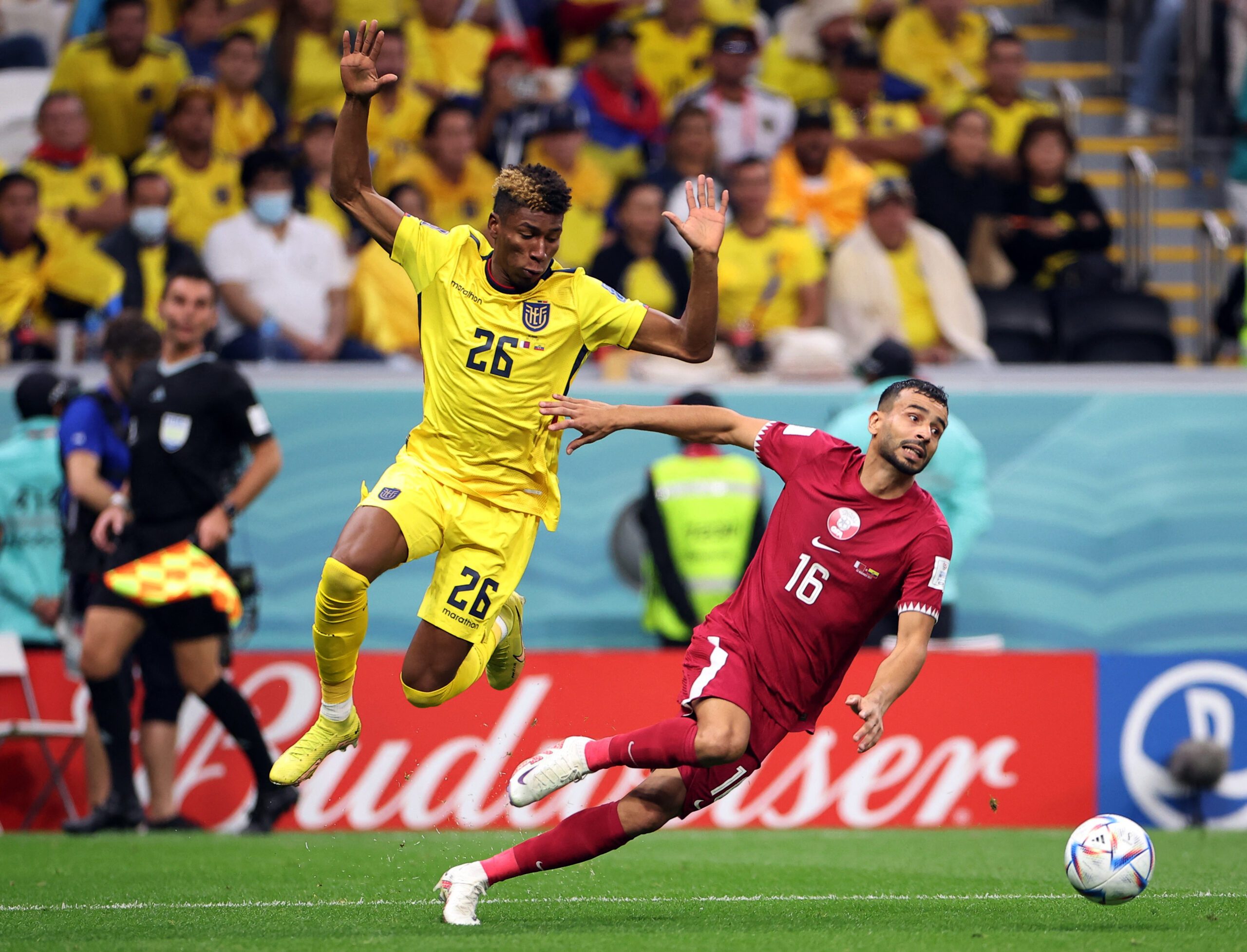
Yes, it is that time again when football addicts around the universe like me are preparing ourselves for our quadrennial ritual – a month-long orgy of global proportions.
November begins the culmination of a three-year process of qualification involving over a hundred countries pushing through the competition despite facing unprecedented and overwhelming challenges, some of which continue to this day – worldwide pandemic, international conflict, natural disaster, humanitarian crisis, injustice, and revolution, uprising and coup d’etat.
But the masses shall not be denied the joy of our sport. Football plays on. In solidarity with all common people around the world, here’s Part 1 of my World Cup assessment, group by group.
Group A – Qatar, Ecuador, Senegal, Netherlands
Whenever the World Cup is hosted by a country that is not of the traditional football power continents (i.e., Europe and South America), it typically becomes a wide-open smackdown like Group A. I have a weak spot for underdogs, so I would root for any of these Group A teams in many contexts – they’re all underdogs in their own right.
While Qatar is the newest nation added to the short list of Asian champions, it is still too soon to announce its inclusion in the top echelon of the continent alongside perennial contenders Japan, Iran, South Korea, Saudi Arabia, and now Australia since 2006. Even as host, Qatar remains a definite underdog, and it’s doubtful that home-desert advantage will be enough to boost them out of this Group A.
As a socially-conscious Filipino, I don’t know if I can bring myself to root for the hosts though, even though they are of my own confederation. The controversies surrounding Qatar’s awarding of host nation notwithstanding, a country that has never qualified for the World Cup until now, the reports of abusive labor practices during stadia construction bleeds my heart, knowing that many of those victimized workers were undoubtedly Overseas Filipino Workers, comprising one of the largest labor groups in the country, there to endure whatever it takes to support their families back home.
Concerns about the exploitation of migrant workers reported by such agencies as the UN International Labor Organization and Amnesty International prompted a backlash against the tiny Gulf hosts, leading to on-pitch protests by players during European qualifiers and calls for boycott by anti-crime officials in Norway, the Nobel Peace Prize awardees.
The Qatari government has been very proactive in trying to mitigate the negative publicity. Not only has the royalty publicly admitted that new laws have been enacted and old ones strengthened to protect the rights of migrant workers, but they have launched the flagship airline’s name (one of my favorites to fly incidentally) into the global football mass market, sponsoring some of the highest-profile clubs like Bayern Munich, AS Roma, Boca Juniors, Paris Saint-Germain, and the 2021 CONCACAF Gold Cup and 2022-2023 Nations League championship tournaments.
The controversy is not lost on the fans of the world’s richest club though, as Bayern’s chief executive Oliver Kahn was forced to defend their partnership with Qatar Airways under intense questioning at a panel discussion last summer held around the allegations. Reported improvements in work conditions and laws protecting migrant workers have been attributed to the scrutiny brought on by the World Cup during these past eight years of preparation and construction. Still, reports of abuses continue to emerge.
The question remains whether these improvements are effectively and consistently implemented and if they will stand the test of time after World Cup attention has faded. I am a little assuaged by Qatar Airways’s sponsorship of the Philippines Football League, the top division in a poor country perpetually searching for support.
I cannot help but feel the vast improvement I have observed in the quality of play in the PFL is at least partly the result of financial resources made available to the league and clubs, particularly as they have impacted the domestic youth development system, the critical piece of any national football infrastructure. There is still definitely much work to be done for years to come in player development at the youth level, so I hope that Qatar Airways’ support for the Philippines stays for a while and not depart in early December.
Such support does not relieve the concerns around migrant labor conditions in Qatar, especially as they pertain to the welfare of our working people. It should not be an either/or proposition, but just migrant worker conditions must coexist with the corporate support of grassroots development programs in poor countries such as ours. One does not preclude the other.
The migrant worker controversy is only one of a host of criticisms directed at the Qatari royal government, including discriminatory practices against women and the LGBTQ community.
Who are we to judge Qatar though? Is there a double standard being applied by the West? Previous hosts have held far-from-stellar social justice records – Russia in 2018, Brazil in 2014, South Africa in 2010… And even future hosts have much to atone for. The governments of the United States, Mexico, and Canada have all had atrocious histories of persecuting ethnic minorities and other vulnerable groups. Each of these 2026 host countries continues to grapple with their respective socioeconomic inequities and injustices.
Only recently has the Canadian government begun to atone for the cultural genocide perpetrated against indigenous families, with the recent revelation of mass unmarked graves containing hundreds of bodies at residential schools, a state-sponsored system largely implemented by Catholic churches aimed at eradicating First Nations cultures and languages by forcibly taking children from their parents and placing them in boarding schools where many were abused for years and where countless lives were purposely ruined or ended. Canadian Prime Minister Justin Trudeau and Pope Francis himself have expressed apologies, and reparations by some responsible parties have been paid, but no prosecutions have yet come to light.
As we all know, the persecution of indigenous communities is by no means limited to Canada, nor even to the hemisphere; governments on all continents have been guilty of it to varying degrees.
One of the most horrifying crises in Mexico is the continued practice of enforced disappearances, many of which have been attributed to the military or police. Amnesty International reported that in 2021 alone, there were over 7,600 people registered missing or forcibly disappeared. In one such recent notorious case, 43 teachers and college students on their way to a protest disappeared in 2014, evidence pointing to collusion by local police.
Investigations and justice are slow moving, in many cases hindered by government authorities themselves. Just last month, after I began writing this piece, Global Justice, the watchdog group monitoring human rights abuses around the world, declared Mexico the most dangerous country for environmental activists, recording over 50 murdered in 2021, more than three-quarters of the world’s total. Many of these activists were indigenous advocates struggling for land rights.
The United States perpetrated one of the most heinous atrocities recorded in history – the systematic kidnapping, trafficking, and enslavement of millions of African people that went on for centuries, a pillar of free labor upon which the American economy was built, and left a legacy of poverty, inequity, and injustice to which millions of African-American people continue to be subjected in what is now the most powerful country in the world – which their ancestors built.
It is no secret that America is also the most incarcerated country in the world, with a grossly disproportionate number of prisoners being people of color. Many studies conducted by Americans have presented the deep racism rooted in their own justice system.
In short, the three hosts – Canada-USA-Mexico 2026 – have many skeletons in their respective closets to answer for, but we have yet to hear any Nobel Peace Prize laureates calling for a boycott three and a half years from now.
It is impossible to summarize in this brief reflection the immeasurable depth of historical injustice committed by past, present, and future World Cup hosts. So, given the concerns over Qatar’s human rights record, I would say it just falls right in line with that of other hosts past and future. Quite antithetical to the vision of peace and harmony espoused and expressed through the sport of the masses, these are some of the realities we who experience this beautiful game on a religious level must work to reconcile with its ideal, issues that constantly and consistently need to be addressed globally, with or without the World Cup.
In pure footballing terms, as is the case in every World Cup tournament, the absence of a qualifying competition can prove to be disadvantageous for the hosts, and they are challenged to find competitive environments that would provide the rigor they need to prepare for the world’s most important sporting tournament. I like what Qatar did to prepare for their World Cup. Since crashing out in the third round of the Russia 2018 qualifiers, the Qatari Maroon’s schedule has been packed.
In addition to their regular international competitive circuit, including the Arabian Gulf Cup in 2019 (which they hosted), the AFC Asian Cup 2019 in UAE (which they won), the Arab Cup in 2021 (which they hosted and finished third), and the Asian World Cup Qualifiers which doubled as the qualification system for the 2023 Asian Cup (originally to be hosted by China), Qatar entered the CONCACAF Gold Cup 2019 (losing to hosts USA in the semifinals), and Copa America 2019 in Brazil (ending at the bottom of the group stage). The Maroon also participated in the European World Cup Qualifiers as guest entrants.
The tournaments replicated more or less the same rigorous format and schedule as the World Cup, while the qualifiers allowed them a protracted series of international friendlies against countries with full-on top rosters (as opposed to more experimental rosters coaches field in standard friendly matches). They filled the spaces between these competitions with numerous friendlies against other national teams and clubs.
In the European qualifying campaign, Qatar played their home ties at Nagyerdei Stadion in Debrecen, Hungary, so all of their matches were on away soil, producing mixed results at best – with some respectable score lines against the lesser teams of Group A – Ireland, Luxembourg and Azerbaijan – but big losses to Euro powerhouses Portugal and Serbia. I’m afraid this may be a foreshadowing of what’s in store for Qatar against the Dutch on November 30.
On the other foot, the Copa America campaign was disastrous for Qatar, who earned just one point in a draw against Paraguay, and accumulated a -3 goal differential against their other Group B opponents Argentina and Colombia. Although they did slightly better than Ecuador, Qatar’s World Cup opener opponent, I still would have wanted to see more impressive results from the Asian champions.
What has been genuinely impressive through this period of preparation is the emergence of Almoez Ali as one of Asia’s top strikers. The Sudan-born Ali, who plays for Qatari club side Al-Duhail, broke the record of most goals scored in a single Asian Cup tournament with nine total tallies, previously held by Iran’s legendary striker Ali Daei who scored eight in 1996.
At only 26 years old, Almoez Ali is going into his first World Cup with a lot of confidence on the upward curve of his career. Currently the top scorer among active Qatari players with 39 total career international goals in 76 caps, the Maroon’s path of escaping this group stage undoubtedly goes through Almoez Ali. Clearly, his teammates know how to find him on the pitch, supported by experienced veterans like midfielders Abdulaziz Hatem (98 caps) and Karim Boudiaf (111), captain and fellow striker Hassan Al-Haydos (165 with 34 goals scored), defender Boualem Khoukhi (100 with 20 goals), and stellar keeper Saad Al Sheeb (81) all in their early 30’s.
None of these caps however were earned at the big dance; the entire Qatari squad are World Cup rookies with zero minutes of experience at the very highest level of the game. In fact, every player on the Maroon roster plays their club ball in the domestic Qatar Stars League.
Spanish head coach Felix Sanchez may have the element of mystery in the first half of the first match, but against Ecuador, who are now going into their fourth World Cup out of arguably the toughest qualification system in the world, his Qatari Maroon will find an opponent desperate to exorcize ghosts of past failures.
In the eyes of Ecuador, the match against the hosts is a must-win, their most prime opportunity to earn an immediate three precious points and poke a toe into the knockout rounds, which they have achieved only once.
Ecuador will welcome the Maroon to the big dance fighting and scrapping for control of the floor like it’s their last pasillo. I’m sure Sanchez is thinking similarly, and Qatar will hang in there in the first half, showcasing their moves to the world, but they will fail to up their game in the second half when Ecuador will adjust, take charge of the music, and bounce the Maroons out of the disco. For both of these teams featured in the tournament opener, it only gets much harder after Match Night 1.
By every measure, Ecuador are the quintessential underdogs. One of only two South American countries who have never won the continental championship (Venezuela being the other) nor even played in the final, Ecuador achieved World Cup qualification for the first time in 2002, finishing in 24th place after a first-round elimination. La Tricolor did way better in Germany 2006, making it into the Round of 16, only to be blanked and sent packing by England. In Brazil 2014, when the tournament was contested on their own doorstep, Ecuador, still mourning the tragic death of striker Chucho Benitez, were the only South American team to not survive the group stage.
I am willing to bet Ecuador is coming into Qatar with a bit of a chip on their shoulders. This is their fourth time around and I think they’ve had enough of disappointing runs and early exits. They’re coming out for some blood. Ecuador certainly has the talent for Argentinian journeyman head coach Gustavo Alfaro, who guided La Tri through the marathon qualifying campaign, match dates postponed and rescheduled due to global pandemic and all, to finish in the fourth spot. How the Ecuadorian national team performs should be of keen interest to my fellow Major League Soccer watchers.
Over the last year, coach Alfaro called up a total of eight players from six different MLS clubs, the second largest contingent outside the Ecuadoran Liga Pro, just behind Liga MX’s ten. These include a trio from newly crowned Supporters’ Shield winners LAFC – Sebas Mendez, Chiqui Palacios, and Jose Cifuentes. The latter two were critical components in LAFC’s remarkable run to the top of the league’s Western Conference.
Xavier Arreaga has been a key performer in Seattle Sounders’ successes of late, most notably dominating UNAM to capture the 2022 CONCACAF Champions League trophy. Palacios, Cifuentes, and Arreaga are presenting strong cases for themselves to stay in Ecuador’s final roster for November, alongside striker Leonardo Campana who has scored 11 times in 26 outings for Inter Miami this season.
The most potent attacker for Ecuador is Campana’s striking partner and captain Enner Valencia of Fenerbahçe, who leads active players with 35 goals and 74 caps. Valencia and keeper Alexander Dominguez are the only two players in Ecuador’s roster of recent call-ups with previous World Cup experience, both members of that 2014 squad. Their leadership will be key to Ecuador’s hopes of making a dent in the group stage.
As much as I like Ecuador and as much as I wish they would break out of the group, I’m afraid a dent is all they’re going to manage after their opening match against their hapless hosts, as the hope generated by their inspired win will surely be dashed five days later when they face a resurgent Dutch team intent upon vanquishing their absence in Russia four and a half years ago.
The determination of the Netherlands to retake their rightful seat among the elite is evident in the reinstallation of Louis Van Gaal for a third term at the helm. One of the most decorated football coaches in history, Van Gaal has won almost every prestigious European trophy during his tenures at Ajax, Barcelona, AZ Alkmaar, Bayern Munich, and Manchester United, earning just about every individual award possible for a coach. Internationally however, World Cup victory has eluded him. A third-place finish in 2014 remains the lone World Cup honor on his extensive resume.
Coach Van Gaal’s underachievement reflects the history of the Dutch national program. In the context of their colossal contribution to the evolution of the game, Holland’s cumulative performance at the World Cup represents a massive underachievement. The way the game is played today can be credited to the Total Football philosophy the Dutch developed and introduced to the rest of the world by Johann Cruyff’s generation in the 1970’s.
Today, teams cannot win without effective implementation of some aspect of Total Football.
The Ajax Amsterdam academy system has been a model for national youth development programs to emulate worldwide. Founded in 1900, the Ajax Youth Academy has been churning out world-class players generation after generation. The list of alumni includes such names as Kluivert, Davids, Rijkaard, Bergkamp, de Boer, Sneijder, Blind, de Jong, Van der Sar, Reiziger, Seedorf, Cruyff himself, and the list of stars goes on and on and on.
Despite its immeasurable influence on the game, the best Holland has been able to take home is the runners-up trophy. In fact, the Netherlands holds the dubious record of most World Cup championship matches played without winning it. Three times, they’ve gotten to the top of the mountain only to roll away short. This explains why I consider the Dutch an underdog. They will, however, dominate Group A.
Once again, Van Gaal will be charged to lead a superstar-studded squad collected from the most prestigious and most successful clubs in the world, a roster that includes Liverpool’s van Dijk, Munich’s de Ligt and Gravenberch, Barcelona’s Depay, Inter Milan’s Dumfries and de Vrij, Manchester United’s Malacia, a host of players from Eindhoven and Ajax, just to name a few.
With this kind of lineup, it doesn’t come as a surprise that the Netherlands has fired their way to the top of the UEFA Nations League A Group 4 with no losses in six matches, including a 4-1 drubbing of world No. 2 Belgium in Brussels last June, amassing a league-best +8 goal differential. The Oranje have a lot of momentum and confidence indeed going into November.
The biggest challenge the Dutch will face in the group stage will be newly crowned African champions Senegal, my favorite team that everyone has written off.
“Why would I want 10 Ferraris, 20 diamond watches, or two planes? What would these objects do for me and for the world? I was hungry and I had to work in the field; I survived hard times, played football barefooted, I did not have an education and many other things, but today with what I earn, thanks to football, I can help my people.”
These were the words of Sadio Mané, this year’s African Footballer of the Year and runner-up for the Ballon d’Or, who led Senegal to their first continental championship in February and their second World Cup berth in a row.
Mané is also the inaugural recipient of the prestigious Socrates Award, named after the former Brazil captain, co-created by the advocacy group Peace and Sport to honor athletes who have made a deep impact on social development. Through six seasons with Liverpool and now with Bayern Munich, the prolific goal-scorer has risen to superstardom while remaining a model of humility and generosity.
Born in one of the poorest regions of the world, Mané has donated large portions of his earnings to improving conditions in his home village of Bambali, Senegal, financing a hospital, a school, a fuel station, and providing direct financial assistance to thousands of families in need. How could one not support such a player?
Sadio Mané is the latest in a long line of players from the African continent to achieve stardom in European big leagues. Since as early as the 1970’s, when Salif Keita (not Salif Keita the famous Malian Griot musician) earned the first African Footballer of the Year award as a member of French giants Saint-Étienne, the African diaspora has been a constant source of superstar players for clubs all over the world, from the elite leagues of Europe to even the most minor of systems, such as the Philippine Football League.
Given the global scale of such a contribution, African teams have had disappointing runs at best in World Cup history. Since Egypt played one match in the 1934 tournament in Italy, a 2-4 defeat to Hungary, it took another seven cycles of the quadrennial competition for another African representative to qualify (Morocco in 1970). It took a boycott of the 1966 edition for FIFA to finally grant Africa its own allotted spot in the tournament, as opposed to a playoff system against Asian, Oceanian, and European teams to qualify.
Out of the total 43 African teams to have made the finals since 1970, only eight have managed to break out of the group stage. Whereas in Brazil 2014, five out of six South American teams rolled into the knockout rounds, only one out of six African representatives (Ghana) survived the group stage in 2010 when the competition was hosted on the continent for the first time. This underdog status cannot be more aptly applied continent-wide than to the landmass of humanity’s origin.
Entering the tournament under everyone’s radar may serve the Lions of Teranga well. In this game, underestimating your opponent can be your death knell – just ask the USA in 1998 versus Iran and in 2017 versus Trinidad and Tobago. With a roster of stars who have made their mark at the highest club level in Europe, Senegal is poised to be the sleeper team of the tournament, starting with the man between the sticks Edouard Mendy, who has garnered a long list of silverware over the last three years with both Chelsea and the Senegalese National Team.
Winning the UEFA Champions League, the UEFA Super Cup, the Club World Cup, and the Africa Cup of Nations all in the same year, it’s a no-brainer that Mendy is the current reigning Best FIFA Men’s Goalkeeper in the world, as well as on two different continents. Mendy’s Chelsea teammate Kalidou Koulibaly has captained the Senegalese side into two successive AFCON championship matches, including the victory over Egypt in February.
Koulibaly joined Chelsea this year after eight seasons with Napoli helping them win the Coppa Italia in the 2019-2020 campaign. Prior to that, he won the 2012 Belgian Cup with Genk in his first season with the club. Koulibaly’s Vice-Captain Idrissa Gueye is the most capped among current Senegal players, earning an equally impressive menu of medals.
Now in his second go round with Everton, Gueye transferred back to the English Premiere League side this year after helping Paris Saint Germain win their 9th and 10th Ligue 1 titles, the Coupe de France twice and the Coupe de la Ligue. Gueye made it to the Champions League semifinals twice during his stint with PSG.
Center midfielder Cheikhou Kouyaté of Nottingham Forest is also accustomed to raising trophies. During his six seasons with Anderlecht, Kouyaté won the Belgian Super Cup three times, including back-to-back 2012-2013 trophies, and the Belgian Pro League title four times, with a three peat from 2011-12 to 2013-14.
And then there is Sadio Mané, for five seasons Mohammed Salah’s striking partner at Liverpool, accumulating 90 goals in 196 appearances, amassing an even longer list of silverware and awards. This year, Mané made a much publicized transfer to Bayern Munich, where he has already scored five goals in the first 11 matches of the young Bundesliga season.
Currently rated by many as the best player in the world, Mané is not only lauded for his speed, creativity, power and intelligence on the field, but his humility and kindness off the field. These veterans will lead the charge for the younger up-and-coming Lions of Teranga hungry for more trophies, like Watford’s Ismaila Sarr.
But to me, the most endearing aspect of Senegal is that for the second World Cup in a row, they are the only team in the tournament coached by a dread. As a player with PSG, Aliou Cissé came in second in the 1999-2000 Coupe de la Ligue and won the now-defunct UEFA Intertoto Cup in 2001. He was a member of the 2002 Senegal squad that finished as runners-up in the African championship.
Appointed to the national team manager job in 2015, Cissé has since posted an impeccable record, guiding Senegal through two successful World Cup qualifications and two AFCON finals, winning it all the second time around. With Coach Cissé’s long dreadlocks gracing the sidelines of every Senegal game, an outsider can only imagine what kind of music they jam to in the locker room.
Senegal is the gem of Qatar 2022, positioned to crack through the quarterfinal ceiling for all of Africa, leaving opposing players sitting in the grass wondering, “What in the World Cup just happened?”
Group A standings prediction
- Netherlands
- Senegal
- Ecuador
- Qatar
(Next: Part 2 – The Group of War)
– Rappler.com
Kokoy Severino is a career educator and nationally certified youth soccer coach in the United States who now lives in his home country of the Philippines. For over 23 years, he implemented the beautiful game as a gang-intervention program in high-poverty urban school districts in the Greater Houston area of Texas. He has also worked with economically-disadvantaged communities in the Philippines, using football to mentor youths out of poverty. He is on the coaching staff of the Football for Peace movement, the Elmer Lacknet Bedia Football Academy, and a core member of Initiatives and Hearts for Indigenous People, a collective of volunteer soccer coaches who work with youths in poverty, particularly among the marginalized ethnic minorities of the Philippines.
Add a comment
How does this make you feel?
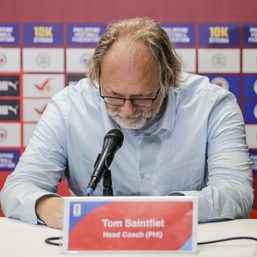
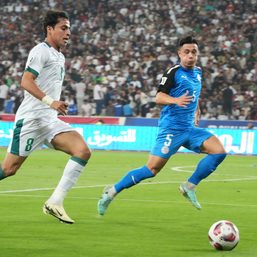
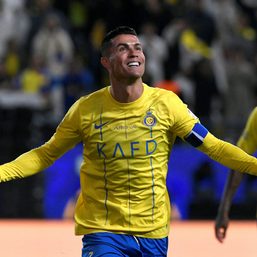
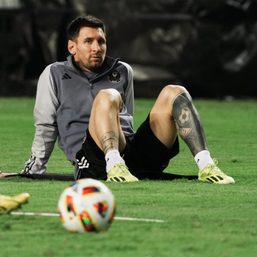
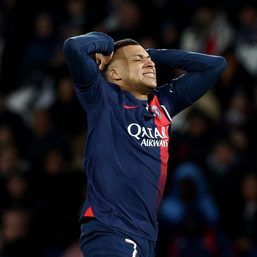
There are no comments yet. Add your comment to start the conversation.